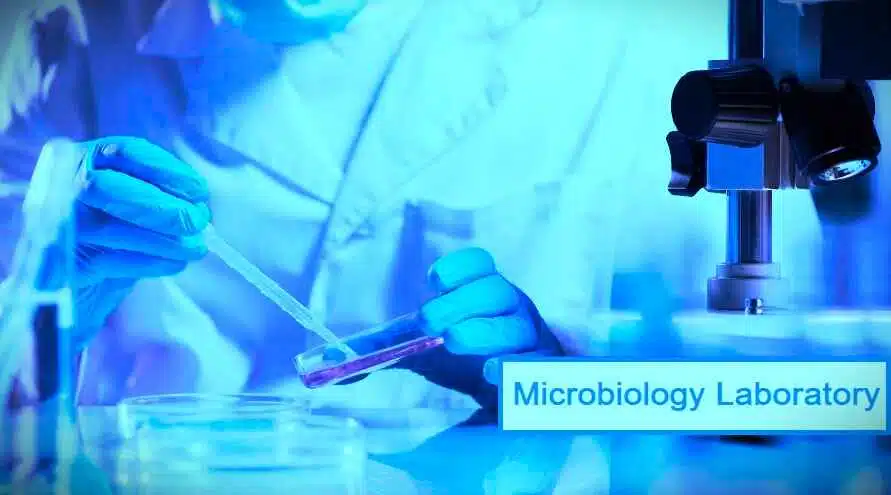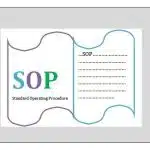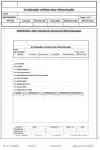Learn about the cleaning validation protocol for microbiology lab of cleaning validation process in the pharmaceutical industry.
Table of Contents

1. Objective
The purpose of this Cleaning Validation Protocol is to define the procedures for verifying that cleaning processes in the microbiology area of the pharmaceutical facility effectively remove residues (e.g., microbiological samples, disinfectants, chemicals, etc.) and prevent cross-contamination of products. The validation ensures that the cleaning methods are consistently effective and maintain the integrity of the microbiological environment.
2. Scope
This protocol applies to all cleaning procedures, including routine cleaning and cleaning after microbiological experiments, that are conducted in the microbiology laboratories and related facilities. It covers cleaning of surfaces, equipment, tools, and utensils used for microbiological testing.
3. References
3.1 Good Manufacturing Practice (GMP) Guidelines (FDA, EMA, ICH)
3.2 USP <1072> Disinfectants and Antiseptics
3.3 WHO Guidelines on Cleaning and Sanitization
3.4 SOP for Cleaning of Microbiology Equipment and Surfaces
3.5 Cleaning Validation Protocol Template
4. Definitions
4.1 Residue: Any material remaining on surfaces after a cleaning process, including microbial contaminants, cleaning agents, and media residues.
4.2. Cross-contamination: The unintended transfer of substances (e.g., microorganisms, chemicals, or residues) between products or processes.
4.3 Cleaning Validation: A documented process that demonstrates the effectiveness of cleaning procedures in removing residues.
5. Responsibilities
5.1 Microbiology Department: Ensure that all equipment, surfaces, and tools are cleaned according to the validated cleaning procedures and maintain cleanliness records.
5.2 Validation Team: Responsible for preparing, executing, and reviewing the validation protocol, including sampling and analysis.
5.3 Quality Assurance (QA): Review and approve the validation protocol, ensure compliance, and provide oversight on documentation.
6. Cleaning Process Overview
The following steps must be demonstrated during the validation process:
6.1 Identification of Equipment and Surfaces to be Cleaned:
6.1.1 List all equipment, surfaces, and utensils in the microbiology area that require validation.
6.1.2 Identify high-risk areas where contamination is most likely to occur, such as incubators, benches, media preparation areas, and sterile equipment.
6.2 Cleaning Methods:
6.2.1 Describe the cleaning methods to be used (manual or automated), the types of cleaning agents, and their concentration.
6.2.2 Specify the cleaning agents, disinfectants, and sanitizers, including contact times, and the process for rinsing and drying.
6.3 Cleaning Frequency:
6.3.1 Define the frequency of cleaning, which may vary depending on the type of microbiological activity and equipment use.
6.3.2 Frequency should be established based on contamination risk assessments.
6.4 Cleaning Equipment and Materials:
6.4.1 Identify the equipment (e.g., mops, wipes, brushes, sprays) and materials (e.g., cleaning solutions, disinfectants) required for cleaning.
6.4.2 Use only validated cleaning agents and ensure that tools are properly sanitized after each use.
7. Validation Methodology
To ensure that cleaning procedures are effective and validated, the following steps will be implemented:
7.1 Selection of Cleaning Validation Parameters:
7.1.1 Microbial Sampling: Conduct microbiological swab tests or surface contact plates to detect any microbial residues post-cleaning.
7.1.2 Visual Inspection: Confirm that no visible residue or debris remains on cleaned surfaces.
7.1.3 Chemical Residue Testing: If applicable, swab or rinse surfaces to detect any residual cleaning agents using validated analytical methods (e.g., HPLC, UV spectrophotometry).
7.2 Sample Collection:
7.2.1 Swab or Rinse Sampling: Identify critical locations where residue could remain (e.g., equipment surfaces, floors, walls, and storage areas). Use pre-approved swabbing methods for residue collection.
7.2.2 Sampling should be done at various locations and should include worst-case scenarios, i.e., the area’s most likely to have residue build-up.
7.3 Sampling Frequency:
7.3.1 Initial Cleaning Validation: Conduct at least three independent cleaning runs to demonstrate that the cleaning procedure is consistently effective.
7.3.2 Revalidation: Conduct routine monitoring and sampling every six months or after any significant changes (e.g., new equipment, cleaning agents, or microbiological processes).
7.4 Acceptable Limits:
7.4.1 Microbiological Limits: Define acceptable microbiological limits based on risk assessments and historical data for microbial contamination. Typically, these limits should align with the levels acceptable in pharmaceutical manufacturing areas.
7.4.2 Chemical Residue Limits: Set acceptable limits for any cleaning agents or disinfectants based on the safety and regulatory standards for pharmaceuticals.
8. Execution of Cleaning Validation
8.1 Pre-Validation Cleaning: Clean the equipment and surfaces using the prescribed cleaning method before sampling.
8.2 Sampling and Analysis:
8.2.1 Collect samples at predetermined points following the cleaning process.
8.2.2 Perform microbiological analysis (e.g., plate count, contact plates, etc.) and chemical analysis (for cleaning agents, if applicable).
8.2.3 Analyze the results to compare against established limits.
8.3 Evaluation of Results:
8.3.1 Compare the microbial and chemical residues found with the defined acceptable limits.
8.3.2 If the cleaning method meets the established criteria, it is deemed validated. If not, adjustments must be made to the cleaning process, and further testing is required.
9. Documentation and Reporting
9.1 Record all steps, including sampling points, methods, and results.
9.2 Document deviations, corrective actions, and any changes made to the cleaning process.
9.3 Prepare a final report summarizing the validation findings, including the acceptable limits, results of testing, and conclusions.
10. Revalidation Criteria
Revalidation of the cleaning process is required under the following circumstances:
10.1 Process Changes: When equipment or cleaning agents change.
10.2 New Microbiological Risks: When a new strain or organism is introduced.
10.3 Environmental Changes: When changes in environmental conditions could affect the effectiveness of cleaning.
10.4 Out-of-Specification Results: If any sampling results exceed the acceptable limits.
11. Conclusion
This Cleaning Validation Protocol ensures that cleaning methods used in the microbiology area of the pharmaceutical facility are effective, consistent, and comply with GMP guidelines. It guarantees that the microbiological environment is free from residues, ensuring that cross-contamination is minimized and product integrity is maintained.
Related Topics:
- Cleaning Validation Protocol for Quality Control
- Cleaning Validation Protocol for Production Area in Pharmaceuticals
- Cleaning Validation Master Plan (CVMP)

Abdus Sobhan Salim is professional experienced pharmacist in pharmaceuticals, author and founder of pharmabossbd.com, the first Bangladeshi pharmaceutical blogger since 2019.



